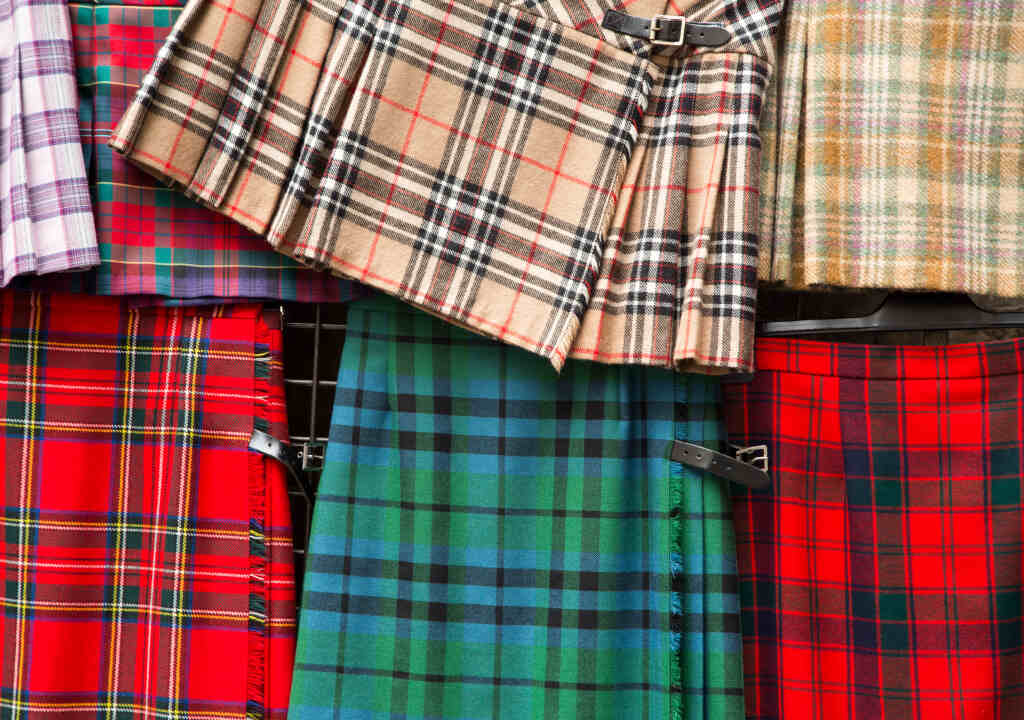How to Choose the Best Kilt Fabric?

Choosing the right fabric for your traditional kilt is crucial for comfort and maintaining the traditional elegance and durability of this iconic garment. Whether you're looking for a kilt for a special occasion or everyday wear, understanding the different types of fabrics available will help you make an informed decision. Here's a comprehensive guide to selecting the best kilt fabric.
Understand the Types of Kilt Fabrics
- Wool: Traditional Kilt are traditionally made from wool. They offer excellent insulation, durability, and a classic look. Kilts can be either lightweight or heavyweight. Lightweight wool is suitable for warmer climates or casual wear. In contrast, heavyweight wool provides more warmth and is ideal for colder weather.
Polyester: Polyester kilts are popular for those seeking a more affordable and low-maintenance option. These kilts are resistant to wrinkles and stains, making them easy to care for. However, they may have a different traditional feel and breathability than wool.
- Blended Fabrics: Some kilts are made from blends of wool and synthetic fibers. These fabrics combine the benefits of both materials, offering durability and comfort while being more cost-effective than 100% wool kilts.
Consider the Kilt's Purpose
- Formal Occasions: A wool kilt tradition is often preferred for formal events such as weddings or ceremonies. Wool's natural drape and traditional look contribute to an elegant appearance. Opt for a high-quality wool fabric with a classic tartan pattern.
- Casual Wear: Polyester or blended fabrics might be a better choice if you need a kilt for everyday wear or casual events. These fabrics are more affordable and easier to care for while providing a stylish look.
- Outdoor Activities: For outdoor activities or situations with high wear-and-tear, consider a kilt made from a durable blended fabric. These kilts can withstand more rugged conditions and provide greater comfort and flexibility.
Evaluate Fabric Weight and Texture
- Lightweight: Lightweight kilts are ideal for warmer weather. They offer greater breathability and comfort, making them suitable for casual wear or during summer months. These quality are also offer by traditional irish kilt.
- Heavyweight: Heavyweight kilts are designed for colder climates or formal occasions. The extra weight provides better insulation and a more structured appearance.
- Texture: The texture of the fabric also affects comfort. Wool kilts are naturally soft and can be more comfortable against the skin. Polyester kilts may have a smoother texture but can sometimes feel less breathable.
Look at the Tartan Pattern
- Traditional Tartan: For authenticity, adopt traditional tartan patterns deeply rooted in Scottish heritage. These patterns are available in various fabrics, including wool and blended materials.
- Custom Tartan: Some fabric options allow for custom tartan designs. It can be a great way to create a unique look or represent a specific clan or family.
Check for Quality and Craftsmanship
Regardless of the fabric you choose, ensure that the kilt is well-crafted. Look for details like quality stitching, a secure waistband, and proper pleating. A well-made kilt will not only look better but also last longer.
Budget Considerations
- High-End Wool: Wool kilts can be more expensive but offer a traditional, high-quality option. Consider your budget and how often you plan to wear the kilt.
- Affordable Alternatives: Polyester and blended fabrics are more budget-friendly and look stylish. These options are ideal for those looking for value without compromising quality.
Care and Maintenance
- Wool Kilts: Wool kilts require more careful maintenance, including dry cleaning or gentle hand washing. They should be stored properly to maintain their shape and prevent damage.
- Synthetic Fabrics: Polyester and blended fabrics are easier to care for and can often be machine-washed. Follow the care instructions provided to ensure the longevity of the fabric.
Conclusion
Choosing the best traditional kilt fabric involves considering the fabric type, purpose, weight, and quality. Wool remains the traditional choice for its elegance and durability, while polyester and blended fabrics offer practicality and affordability. You can select a kilt fabric to enhance your comfort and style by understanding your needs and preferences.
FAQ's
The best material for a kilt is traditionally wool. Wool is durable and comfortable and drapes well, making it ideal for kilts. It also has excellent insulating properties, keeping you warm and cool in colder weather. Poly-viscose (a blend of polyester and viscose) is a popular alternative for casual wear due to its affordability, ease of care, and wrinkle resistance.
The best weight for a kilt depends on its intended use:
Casual or summer wear: Lightweight kilts (10-13 oz) are more comfortable and breathable.
Formal or traditional events: Medium-weight kilts (13-16 oz) are preferred as they hang better and look more formal.
Cold climates or for a more substantial feel: Heavy-weight kilts (16-19 oz) provide more warmth and structure.
To choose the right kilt, consider the following factors:
Purpose: Determine if you need the kilt for formal occasions, casual wear, or sports.
Material: Choose between wool for traditional wear or poly-viscose for casual use.
Weight: Select the appropriate weight based on the climate and formality of the occasion.
Fit: Ensure the kilt fits comfortably at your natural waist, usually 1-2 inches above the navel.
Tartan: Select a tartan that resonates with your family heritage, personal preference, or the occasion.
Length: The kilt should fall to the middle of your kneecap.
Choosing the right kilt to wear depends on the occasion and your personal preference:
Formal events: Opt for a traditional wool kilt with a formal tartan pattern paired with a Prince Charlie jacket, vest, and accessories like a sporran, kilt hose, and flashes.
Casual events: A lighter-weight kilt in poly-viscose or cotton can be worn with a casual shirt or sweater.
Sporting events: Utility kilts made from durable materials like canvas or denim are practical and comfortable.
While there are no strict rules, there are traditional guidelines for wearing a kilt:
Length: The kilt should fall to the middle of your kneecap.
Pleats: The pleats should be at the back, with the apron overlapping at the front.
Accessories: Wear a sporran, kilt hose, flashes, and appropriate footwear (ghillie brogues or boots).
Jackets: Pair the kilt with a suitable jacket (Prince Charlie for formal, tweed for semi-formal, or casual jackets).
Sashes and Pins: Sashes can be worn over the shoulder, and kilt pins should be placed on the lower corner of the front apron.
Yes, non-Scots can wear kilts. Kilts symbolize Scottish heritage but are also appreciated globally for their style and comfort. Wearing a kilt can be a way to celebrate Scottish culture, show appreciation for the craftsmanship, or enjoy the unique and traditional garment. Just respect the cultural significance and wear it with pride and dignity.

